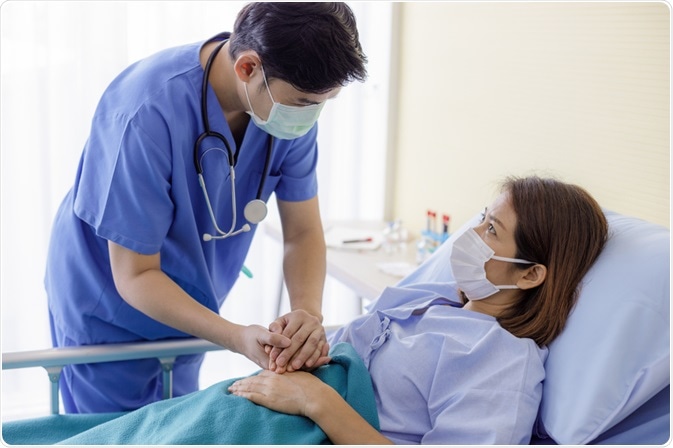Bacterial vaginosis (BV) is caused by an imbalance in the amount of good and bad bacteria in the vaginal area. It can cause irritation in the vaginal area, peculiar discharge, and a distinct odor, among other things.
Although the body may be able to remove BV on its own, the condition might increase the risk of additional health problems if left untreated. Because of this, and because the symptoms can be unpleasant, anyone experiencing BV symptoms should seek medical help.
This article discusses the symptoms of BV, as well as the causes, consequences, and home cures and therapies. It also looks at how to avoid BV and how to tell the difference between BV and a yeast infection.
Causes
The imbalance in the populations of helpful and dangerous bacteria that naturally exist in the vaginal canal causes BV.
Imbalance can occur for a variety of reasons, including:
- not using a barrier method, such as a condom, during sex
- being pregnant
- recently using antibiotics
- having sex with a new partner
- having sex with multiple partners
- douching
After sex with a new partner, BV is common. Although BV is not a STI, it can raise your chances of getting one.
The role of bacteria
Bacteria can be found in every part of the body, but only some of them are hazardous. When there are more hazardous bacteria than good bacteria in a given region, health issues can occur.
The majority of bacteria in the vaginal area are beneficial, whereas BV develops when the quantity of dangerous bacteria increases.
Lactobacilli bacteria should be present in the vaginal canal. Lactic acid is produced, making the vagina slightly acidic. This prevents the growth of potentially hazardous germs.
Lactobacilli deficiency might cause the vagina to become less acidic. Harmful bacteria can grow and thrive in the vaginal environment if it is not acidic enough.
Experts are still puzzled as to how these dangerous bacteria are linked to BV.
Risk factors
BV can affect everyone who has a vagina. These variables can enhance your chances of getting it:
- washing underwear with a strong detergent
- having sex with a new partner
- having multiple sex partners
- using certain feminine hygiene products, such as vaginal deodorants and douches
- using a perfumed bubble bath
- using some scented soaps
- bathing in water that contains antiseptic liquids
- smoking
BV cannot be obtained from the following sources:
- swimming pools
- bedding
- toilet seats
Symptoms
The most frequent vaginal condition in women of reproductive age is BV.
Approximately 50–75 percent of females with BV show no signs or symptoms. If this happens, it usually results in changes in vaginal discharge, such as an increase in volume. A burning or itchy sensation in the vaginal area is also possible.
Vaginal discharge in BV patients may include:
- a strong, unpleasant smell, often described as fishy
- a gray or white color
- a watery, thin consistency
A burning feeling during urination and itching around the exterior of the vagina may also occur, though this is less common.
Complications
Although BV is not hazardous in and of itself, it can increase the risk of various health problems.
Health issues in general
- sexually transmitted infections (STIs), such as:
- herpes
- human papillomavirus, better known as HPV
- chlamydia
- gonorrhea
- HIV, as having BV increases a person’s susceptibility to the virus
- a postsurgical infection, for example after some types of abortion or a hysterectomy
Pregnancy complications
Possible complications of BV during pregnancy include:
- early or preterm delivery
- loss of pregnancy
- the amniotic sac breaking open too early
- postpartum endometritis, which is irritation or inflammation of the lining of the uterus after delivery
- chorioamnionitis, which is inflammation of the membranes around the fetus
Chorioamnionitis increases the chances of a premature birth significantly. If the child survives, he or she is more likely to develop cerebral palsy.
Fertility complications
BV may increase the chances of having trouble conceiving. It also raises the chance of health problems that can impact fertility.
Complications that may arise include:
- Unsuccessful in vitro fertilization (IVF): Any IVF therapies may be less likely to succeed if a person has BV.
- Pelvic inflammatory disease: This is an infection and inflammation of the upper female genital tract that can lead to serious consequences, such as infertility.
- Tubal factor infertility: Damage to the fallopian tubes, which connect the ovaries to the uterus, causes infertility.
Treatment
BV can occasionally go away on its own. The symptoms, however, can be mistaken for those of other health problems including gonorrhea or trichomaniasis. Furthermore, untreated BV might cause difficulties, particularly during pregnancy.
As a result, obtaining a professional diagnosis is critical to ensuring that the treatment is effective.
In addition, BV may raise the risk of problems after a hysterectomy or some forms of abortion. Some clinicians urge that everyone who has these procedures has BV treatment, regardless of whether or not they have BV symptoms.
Male partners are rarely in need of treatment. BV, on the other hand, can be passed from a male to multiple female sexual partners.
We’ll look at several BV therapy options below.
Antibiotic medication
Antibiotics are successful in up to 90% of instances with BV Trusted Source, although the condition usually returns after a few weeks.
A doctor may prescribe the antibiotics listed below to treat BV.
Metronidazole
The most common antibiotic treatment for BV is metronidazole.
It’s available in the following formats:
- Gel: This gel is applied to the vaginal area once a day for five days.
- Single dose: Solosec (secnidazole) was approved by the Food and Drug Administration (FDA) in 2017 for the treatment of BV. This is the only oral BV therapy available in a single dose. A 2-gram (g) packet is sprinkled upon food.
- Oral tablets: For 7 days, people usually take these twice a day. Tablets are the most effective medication, according to doctors, especially if the person is breastfeeding or pregnant.
Metronidazole has a negative interaction with alcohol. This combination can make a person sick and cause nausea and vomiting.
Clindamycin
Clindamycin is an antibiotic that can be used instead of penicillin. It might work if metronidazole doesn’t work or if the infection comes back.
Clindamycin cream is the first-line treatment that is applied to the vagina. This is done every night for seven days.
Instead, doctors may recommend clindamycin tablets, which must be taken twice a day for seven days, or clindamycin ovules, which must be inserted into the vaginal canal at bedtime for three days.
Due to the fact that clindamycin ovules and cream degrade latex, barrier contraceptive methods may be less effective during treatment.
These are some examples of these methods:
- cervical caps
- diaphragms
- latex condoms
Xaciato, a novel clindamycin gel, was recently approved by the FDA for the treatment of BV in females aged 12 and up.
Tinidazole
Tinidazole is an antibiotic that can be used to treat BV if metronidazole fails if the condition recurs.
A 2-g oral dose is taken once a day for two days. Alternatively, they can take a 1-g dosage once a day for five days.
To reduce the risk of gastrointestinal adverse effects, anyone taking this medication should avoid alcohol and take their doses with meals.
Treatment for recurring symptoms
Within 12 months of treatment, current treatments are linked to recurrence rates of more than 50% .
Doctors may prescribe a prolonged course of metronidazole for recurrent BV. If this doesn’t work, a metronidazole vaginal gel may be prescribed. This can be used every day for ten days or twice a week for three to six months.
While there is no universal agreement on the optimum technique, treating recurrent BV usually necessitates a longer treatment time.
Home remedies
Probiotics are one home cure that may aid in the treatment of BV. These are helpful bacteria that are alive. Some beneficial yeasts are also referred to as “probiotics.”
Multiple research have shown that probiotics can help cure and prevent BV, according to a 2021 review.
Certain probiotics can help restore the natural balance of bacteria in the vaginal canal by increasing the quantity of vaginal Lactobacilli.
Probiotics include the following:
- intravaginal L. fermentum RC-14
- intravaginal L. acidophilus
- intravaginal L. rhamnosus GR-1
- oral Lactobacillus acidophilus
Still, further research is needed to determine the most effective dosages, treatment durations, and administration routes.
Because untreated BV can lead to serious consequences, anyone experiencing symptoms should cause therapy from a healthcare expert. A person might also inquire about the benefits of taking a probiotic.
BV vs. yeast infection
Vaginal candidiasis is the medical term for a vaginal yeast infection.
BV is not the same as a yeast infection, which is caused by an overgrowth of the Candida fungus. BV, on the other hand, is a bacterial condition.
Both of these problems might cause comparable symptoms. A yeast infection can lead to the following symptoms:
- pain or discomfort when urinating
- pain or discomfort during sex
- vaginal itchiness or soreness
- abnormal vaginal discharge
BV causes watery, white or gray vaginal discharge with a fishy odor. A yeast infection usually causes in a thick, creamy, and odorless vaginal discharge. It might taste like cottage cheese.
Because a yeast infection is a fungal infection and BV is a bacterial infection, they need to be treated differently. As a result, getting a professional diagnosis is critical before addressing the symptoms.
Diagnosis
From a person’s statement of symptoms and a physical examination, a healthcare expert may be able to diagnose BV.
They may obtain a small sample of vaginal discharge during the examination and send it off for analysis. The doctor may also check the vaginal pH balance to see how acidic it is.
A doctor may request diagnostic testing if a person is sexually active and suspects they have a STI. These may entail collecting sample cells from the vaginal wall using a swab or a small plastic loop.
Prevention
Because the actual causes of BV are unknown, there is no surefire strategy to prevent it.
These strategies, on the other hand, can help minimize the risk of BV:
- not using scented soaps or vaginal deodorants
- washing underwear in gentle detergents
- using a barrier method of protection, such as a condom, during sex
- avoiding douching
- avoiding perfumed bubble baths
Conclusion
BV is a frequent condition caused by an imbalance in the amount of beneficial and dangerous bacteria in the vaginal area.
Experts aren’t sure whatcauses causing the problem. However, certain circumstances, such as the use of feminine hygiene products and having sex with a new partner or numerous partners, appear to raise the risk.
Untreated BV can raise the risk of STIs and cause severe difficulties, including pregnancy and fertility issues.
BV symptoms might sometimes be mistaken for those of other illnesses that require different treatments. As a result, anyone experiencing BV symptoms should seek medical advice before attempting any treatment or solution.
Sources:
- https://www.solosec.com/bacterial-vaginosis/about-bv
- https://www.womenshealth.gov/a-z-topics/bacterial-vaginosis
- https://www.cdc.gov/std/bv/default.htm
- https://www.ncbi.nlm.nih.gov/pmc/articles/PMC4807032/
- https://pubmed.ncbi.nlm.nih.gov/31403349/
- https://www.ncbi.nlm.nih.gov/books/NBK459216/
- https://www.cdc.gov/fungal/diseases/candidiasis/genital/index.html
- https://www.ncbi.nlm.nih.gov/pubmedhealth/PMH0078015/






